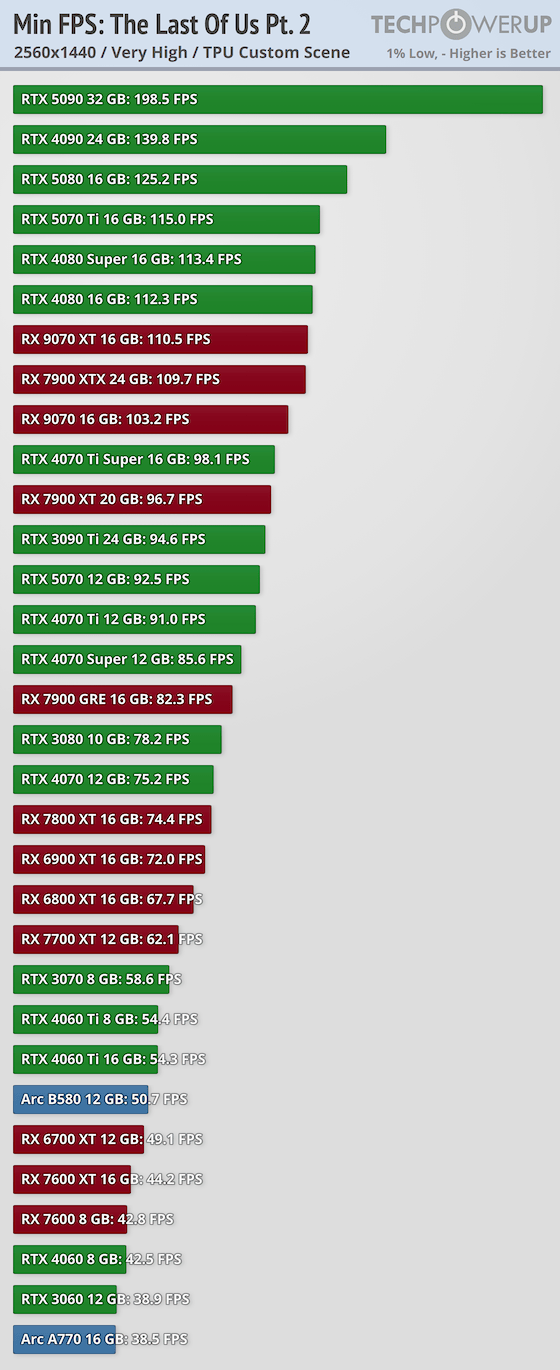The Last of Us part 2 Remastered is the sequel to the first opus, in which we follow the adventures and misadventures of Ellie. The sequel to the story was released very recently on PC, on April 3rd, and TechpowerUp is offering us its usual comparative test where they put several dozen graphics cards through their paces. So, how does this new game turn out? Is it a real purge like the first opus, or has the copy been better polished?
The Last of Us Part 2: how does it turn out?
In terms of performance, all the cards, or almost all of them, perform honourably in 1080p, as you can see. The 60fps is easily achieved with an RTX 4060 8GB, while the RTX 3060 is slightly below this limit with its ~55 FPS. The same goes for Intel’s Arc A770. At the top of the graph, we can see that the RX 9070 XT rivals the RTX 4080, while the RX 9070 is on a par with an RTX 4070 Ti Super, and the same goes for the RX 7900 XT.
In 1440p, the game is already claiming its first victims, with a number of cards no longer breaking the symbolic 60 FPS barrier. So, to play in these conditions, you’ll need at least an RTX 3070; anything below that is a no-go, and you’ll have to make concessions on the visual aspect or activate an upscaler such as DLSS or FSR. As a result, the RTX 4060 falls well below the 60 fps mark with its ~46 FPS, while Intel’s B580 fares a little better with around 56 fps.
Finally, if you’re looking at UHD, you’ll need at least an RTX 5070 to hope to play at 60 fps. A non-super RTX 4070 Ti runs at ~59 FPS, an RTX 4070 12GB displays 49 FPS and more affordable cards like the RTX 4060 is at 25 FPS compared with 34 for the Ti.
Finally, in terms of VRAM, our colleagues measure a consumption of 9.9 GB of memory in 1080p with very high detail, compared with 7.7 GB with low detail. So try to opt for a card with 12 GB of memory to avoid saturating it.
Be that as it may, the game seems to run a lot better on launch than the first game, which was, as a reminder, a veritable purge.
Here’s the performance test from our colleagues!


